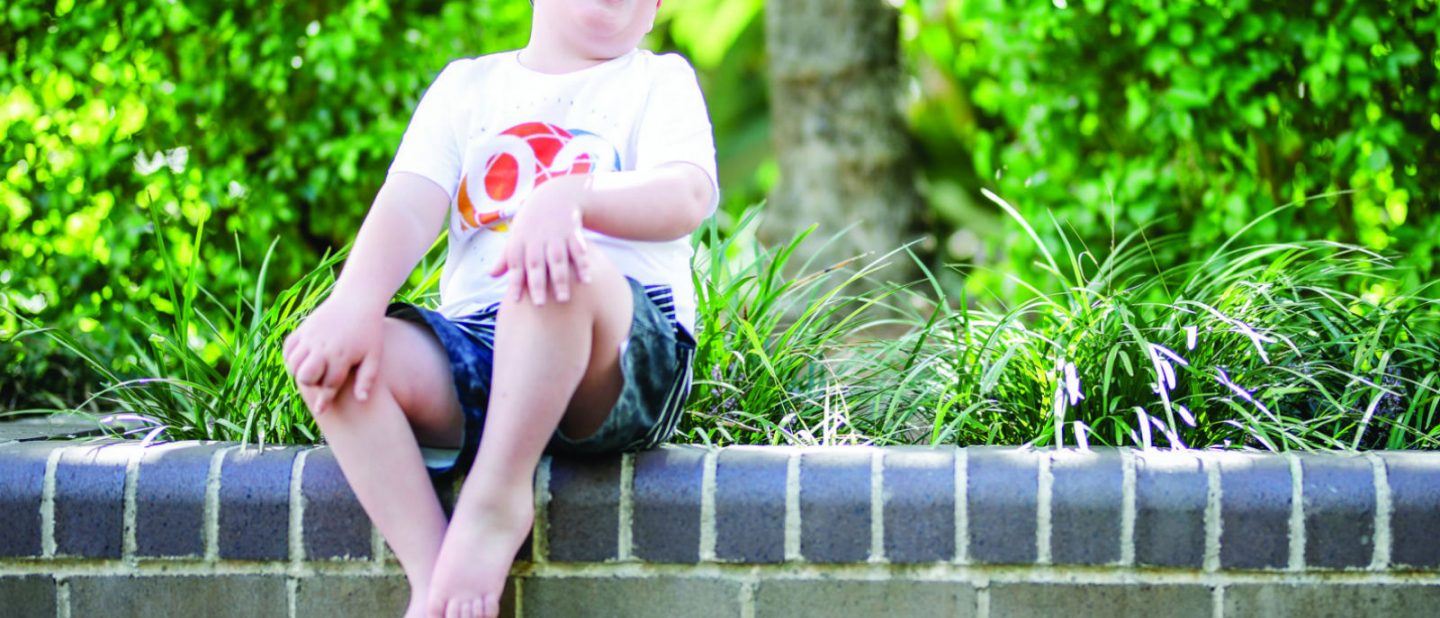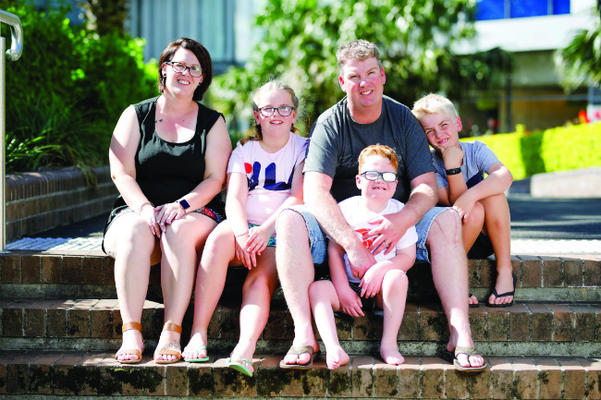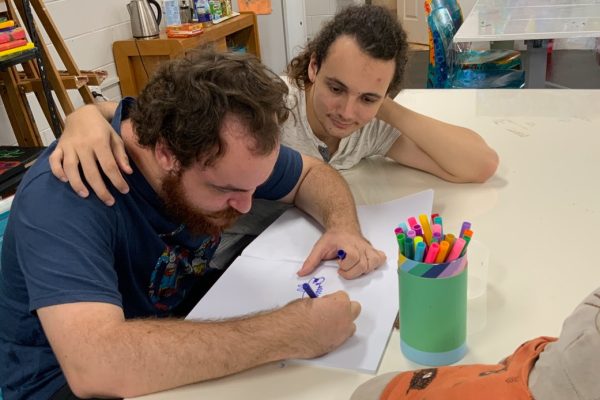
Living with a rare disease: Rahman syndrome
FROM THE MOMENT XAVIER KITCHIN WAS BORN HE HAS STRUGGLED WITH COMPLEX HEALTH ISSUES.
But it’s taken seven years for his family to finally be given a diagnosis to fully understand why their little boy, affectionately nicknamed Bandicoot, has been affected.
Recently diagnosed with HIST1H1E/ Rahman syndrome, the seven year old from Scottsdale in Tasmania is understood to be only the seventh person in the world, and first in Australia to be diagnosed with the rare genetic disorder.
His mother, Rebecca, and father, Jeffrey, say that aside from concerns about the possibility of an enlarged kidney and his expected size at birth – given his older sister Nakita, 11 and brother Darcy, 9, were big babies at 8lbs 4oz and 9lb 5oz respectively – there was no significant indication Xavier would face a lifetime of difficulty.
“Within a few minutes of Xavier being born he turned a navy blue colour, he was administered oxygen and we believed everything would be ok,” Rebecca recalls.
He was soon in a critical condition with breathing difficulties and after treatment for pneumonia failed, he was airlifted to Hobart for specialist care with testing involving a skeletal survey and brain MRI.
Tests confirmed a dead spot in the movement/coordination area of the brain, heart defects and excess fluid in his left kidney.
He was sent to Melbourne as the quest to discover why he had breathing difficulties continued.
While there, he was seen by genetic specialists who noted that he had dysmorphic features including a prominent occiput, bitemporal narrowing, hypertelorisim, broad nasal bridge, upturned nose, micrognathia and macrocephaly.

No formal diagnosis could be made and Xavier spent the first two months of his life between hospitals before going home on home oxygen on June 30, 2011. To date he still requires oxygen at night while being monitored by a pulse oximeter.
The Kitchins describe the journey as a “whirlwind rollercoaster ride” of surgeries and specialist appointments for his intellectual and physical disabilities that continue to this day.
Xavier has been reviewed by geneticists three times since birth but it wasn’t until November 2017 that a diagnosis was determined following trio sequencing.
“I Googled after getting the report but there was just no information on this gene defect nor could I find a syndrome associated with it,” Jeffrey says.
“This gene was only first discovered in 2014 and there were only five cases reported worldwide. After a few months passed Rebecca took to the Internet again and through searching Facebook found another family in Santa Barbara, California, who had a daughter of similar age who looked identical to Xavier. Through social media they have been able to connect with this family and build a network of support with new cases and patients coming forward.
“Xavier is number seven in the world to our knowledge with this syndrome and gene defect and the only case we know of in Australia. The doctors who found this gene are waiting patiently for more cases to present so that further information and collaborating can take place to build a profile of this syndrome.”
The family says it’s a relief to finally be given a diagnosis for little Bandicoot, who loves the Wiggles, Giggle and Hoot and Justine Clarke.
“The most challenging and frustrating thing that we have endured over the past seven years would be not having a diagnosis and not ticking boxes or meeting criteria when it’s come to funding or support,” reveals Rebecca.


“We have had to fundraise and rely on our community for support to help fundraise to buy important and essential equipment that Xavier has needed. This has been extremely hard up until recently when we stumbled upon the Steve Waugh Foundation who have been a godsend for Xavier and us as a family helping fund equipment that Xavier has needed to grow his independence and help him engage in family activities we would otherwise not do.
” Xavier is literally making small steps every day with the help of a support school.
He wears AFOs and is able to walk independently on flat surfaces but uses a wheel chair for long distances, is challenged visually and uses sign language and speech devices to communicate.
But, it is unclear what his future may hold.
“We hope that with time and much patience we may get a better understanding of what might be our future with Xav, but we just take each day as it comes and don’t plan too much into the future,” says Jeffrey.
“The unknown is a scary thing for us, the not knowing. We hope that medically he will be stable and that he will be with us for a long time to come.”
And, if you’re wondering about the genesis of his moniker – it was bestowed on him by his grandfather after Xavier started taking food off the bench and like the marsupial, would always make his way into the veggie patch.
Just as a bandicoot does in the wild, the Kitchins plan to dig in for the long haul and give their child the best future possible and are rewarded by the joy their son brings to others.
“Xavier has an infectious smile that could brighten up the darkest of days. He has defied the odds and continues to make some awesome gains, all in Xavier time.”
HIST1H1E/ Rahman syndrome
Rahman syndrome is a genetic syndrome that includes mild to severe intellectual disability and an increase in height, weight, or head size (overgrowth). The overgrowth is more apparent in infancy and may lessen with time. Other symptoms may include curved fingers, eyes that may not line up in the same direction (strabismus), and facial features such as full cheeks and an increase in the distance between the eyes. The syndrome is caused by changes (mutations) in the HIST1H1E gene.








